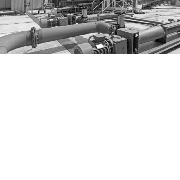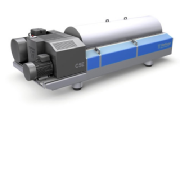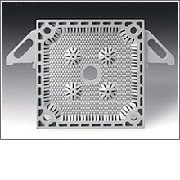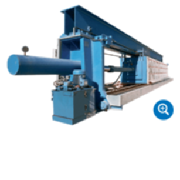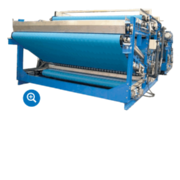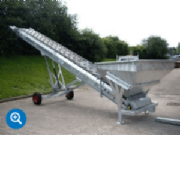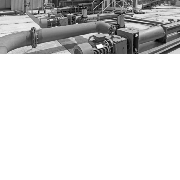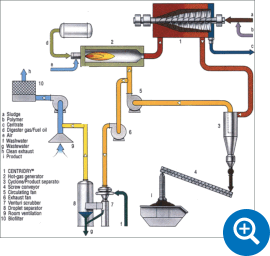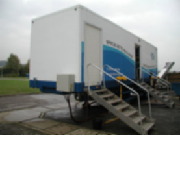Euroby
Euroby Limited is the leading UK environmental waste equipment provider and well-regarded processing company based in Worthing, Sussex with a workshops/factory in the Midlands. Formed in 1996 to provide consultancy services to the power industry, the level of the group’s technical expertise swiftly led them to diversify into the water and other Industrial sectors including food and beverage, oil and minerals.
Euroby's services have enabled many companies and utilities to improve efficiency, reduce costs and increase the effectiveness of their waste management programmes and food and beverage production.
Our ethic is to fulfil the needs and exceed the expectations of our customers. This is achieved with our “State of the art” products and practices and a high standard of service delivered by skilled employees and suppliers. We see ourselves as a forward-thinking company constantly striving to improve the environment whilst seeking opportunities for further growth through the separation of any solids from liquid(s).
-
Euroby installs a Flottweg Separator at major UK brewery
25 November 2019Euroby has recently completed the installation of a Flottweg Clarifier at one of the UK’s best-known breweries. This is the first UK brewery to use this advanced model of the Flottweg clarifier and will certainly not be the last.
The Scottish brewery took the decision to replace its ageing technology with a new state of the art clarifier, the Flottweg Separator type AC2000-420 hyg. Skid Mounted, which will be used for clarification of all beer types within the brewery.
Why use a Euroby clarifier installation?
Freshly brewed beer naturally contains a whole host of different particles, including yeast, hop residue and various other by-products of the brewing process. There are different approaches that can be used to remove these and leave a clear liquid with an appetising appearance, one of which and the most popular, is by using a clarifier.
Without looking too deep into the science, this involves spinning the liquid in a circle. The faster it spins, the more the particles will be pushed outwards from the centre – it’s a little like a big dipper ride when we would experience 2 – 3 times the force of gravity, whereas in a clarifier bowl we exert around 6000 – 8000 times the force of gravity – resulting in high efficiency solids removal and beautiful (bright) clear beer.
-
How individuals and businesses can tackle the problem of food waste
25 November 2019The topic of food waste is one that is never far from the headlines. Only last month, Environment secretary and former Prime Ministerial candidate Michael Gove described the current situation as a “moral, economic and environmental scandal.” Government research has shown10 million tons of food goes to waste every year. That’s around a third of all the food that is produced or imported into the UK.
A global problem
Those statistics are sobering enough, but the UK is not alone in what Gove described as “extravagance and profligacy.” Globally, $1 trillion worth of food, weighing 1.3 billion tons is wasted each year. There are around a billion people on the planet who are currently hungry, yet just a quarter of the food Europe and the US throws away would be enough to feed them. The global population continues to increase, and by 2050, we will need to increase food production by at least 60 percent. Or, of course, we could stop throwing away all that food.Where is the waste coming from?
Most people hear the phrase “food waste” and immediately think of supermarkets throwing away countless loaves of bread and joints of meat because they have reached their “best before” date. The following statistics might, therefore, come as something of a surprise. Here’s where those 10 million tons of wasted food come from:
• Manufacturing – 1.8 million tons (18 percent)
• Hospitality / catering 1.0 million (10 percent)
• Retail – 0.3 million tons (three percent)
• Households 6.9 million tons (69 percent)What is being done?
Even in the world of politics, you will not hear anyone arguing with Michael Gove’s sentiments. However, describing a problem is one thing, taking positive action to solve it is another. The government has announced a range of measures to tackle food waste head on, and Euroby is proud to be involved in these initiatives.
Buying what you need
Looking at those numbers, it is easy to conclude that we are all being far too wasteful and need to change our habits. However, the truth is a little more complex. Retailers also have their part to play in making it easier for us to buy what we need. Morrisons supermarket is looking to meet this challenge with its new We’ll Weigh What You Need service at its fresh food counters, whereby staff will provide the exact quantities of meat, fish or deli products for a customer’s recipe.
Using technology to reduce waste
Innovators and entrepreneurs have quickly realised that any technology that helps reduce food waste will not just be beneficial to our planet – it could also be highly profitable. Tackling waste is therefore one of the top priorities in food tech. Separating different types of waste quickly and efficiently is key here and this is where technology like the Flottweg Z series decanter centrifuge comes into its own. It is used for a variety of food types, including fish meal, grains, vegetable extracts, soy protein and many others.
Other centrifuges such as the Sedicanter and the Tricanter are also finding a growing number of applications in processing food waste, helping to ensure that as many valuable constituents are extracted and reused as possible.
-
What happens after you flush? Dewatering in the sewage sector
25 November 2019Those who enjoy the works of Charles Dickens will feel that they have a good knowledge of the London of the 19th century through novels like Nicholas Nickleby and Our Mutual Friend. The latter, in particular, had the Thames flowing through the meandering storyline, almost like a character in its own right. It’s easy to get caught up in the world Dickens described and to dream of visiting those long gone days, but if we could do so, it might not be quite as quaint and idyllic as we imagine.
Back then, there was no sewage system in London, and everything, from animal carcasses to rotten vegetables to human faeces ended up in the Thames. In the unusually hot summer of 1858, while Dickens was travelling the country on his first reading tour, the city he loved ground to a halt in what was known as The Great Stink. Relief only came when London’s network of sewers was created in the late Victorian period.
In the century and a half since The Big Stink, London’s population has quadrupled to around eight million, but all that waste they produce is something that most don’t even think about. So just what happens to it?
Initial filteringThe first step involved is filtering/screening out all those things that should not be there in the first place. These typically include sanitary towels, cotton buds, nappies and “other objects” that will be left unmentioned. Then the screened wastewater is stored into separation tanks, where oxygen is added and it is gently mixed to encourage solid particles to form clumps and drift to the bottom where they form a sludge. The sludge and the water are then sent in different directions for their own secondary treatments.
Sludge dewatering
There are various forms of treatment processes that can be used to process the sludge, following which it is more than 95 percent liquid. The next course of action is to reduce the solids using a decanter centrifuge that spins at high speed, pushing the solids one way and the liquid the other. This process reduces the volume of liquid to between 80 and 85 percent.From there, the solid matter can be shipped off for disposal or to other processes designed to recover energy for beneficial use or minimise disposal costs
All these processes take place 24 hours a day, 365 days a year, and help ensure that the days of the big stink are permanently consigned to the history books.
-
Everything you Ever Wanted to Know about Biodiesel
28 February 2019Last year, the government announced ambitious targets to double the use of renewable fuels in the UK over the next 15 years. Biodiesel is at the core of this campaign, and it is a fuel that most have heard of but few really understand. On the face of it, running your car on biodiesel sounds like a great idea. Good for the environment and great for your wallet. But is it really that simple?
What is biodiesel?
Biodiesel is a byproduct of vegetable oil and animal fat that can be extracted by centrifuge. It can be produced from material that has already been used in the food industry, making it a highly efficient way of reusing waste and putting it to good use. Biodiesel is a 100 percent renewable alternative to conventional diesel, and is classified as carbon neutral. So from an ecological perspective, it ticks all the right boxes.
Biodiesel also produces far fewer pollutants and toxins than fossil fuels. A study by Bioenergy Australia estimated that biodiesel could lead to harmful emissions being reduced by 85 percent compared with fossil fuel. However, these figures need to be taken with something of a pinch of salt, as the scale of benefits is highly dependent on the production methods used.
How is biofuel used?
From the above, it will be obvious that you cannot simply pour the old oil from your deep fat fryer into the fuel tank of your car, whatever apocryphal tales you might read on the internet. Try to do so, and all you are likely to achieve is a damaged engine and potentially getting your car impounded for running it on a public road without paying fuel duty.
However, commercially made biofuel is big business, and it is already being used widely in fuel stations across the UK. Most blend it with conventional fuel, and while currently, the fuel you put in your car is only about five percent biodiesel, this figure is set to rise over the coming years.
Are there any risks?
Provided you use the blended biofuel that is sold at outlets across the country, there is no risk and you will not notice any difference in fuel economy or performance. Of course, if you put fuel from any other source into your tank, that is another matter. To do so could lead to serious damage, vehicle breakdown or even an accident.
Why isn’t there more investment in biofuel?
On the face of it, biofuel seems like a perfect solution to the world’s fuel crisis. However, it is seen by governments as little more than a stop gap, a way to reduce both our reliance on fossil fuels and the emissions they produce.
Part of the reason is that biodiesel is related to technology that is nearing obsolescence. Given the government plans to phase out petrol and diesel cars entirely by 2040, it is seen as a solution to a problem that will soon disappear forever. However, even if that target is met, “soon” is a subjective word. There will still be diesel cars on the road for many years to come, so biofuel has an important role to play in the medium term.


